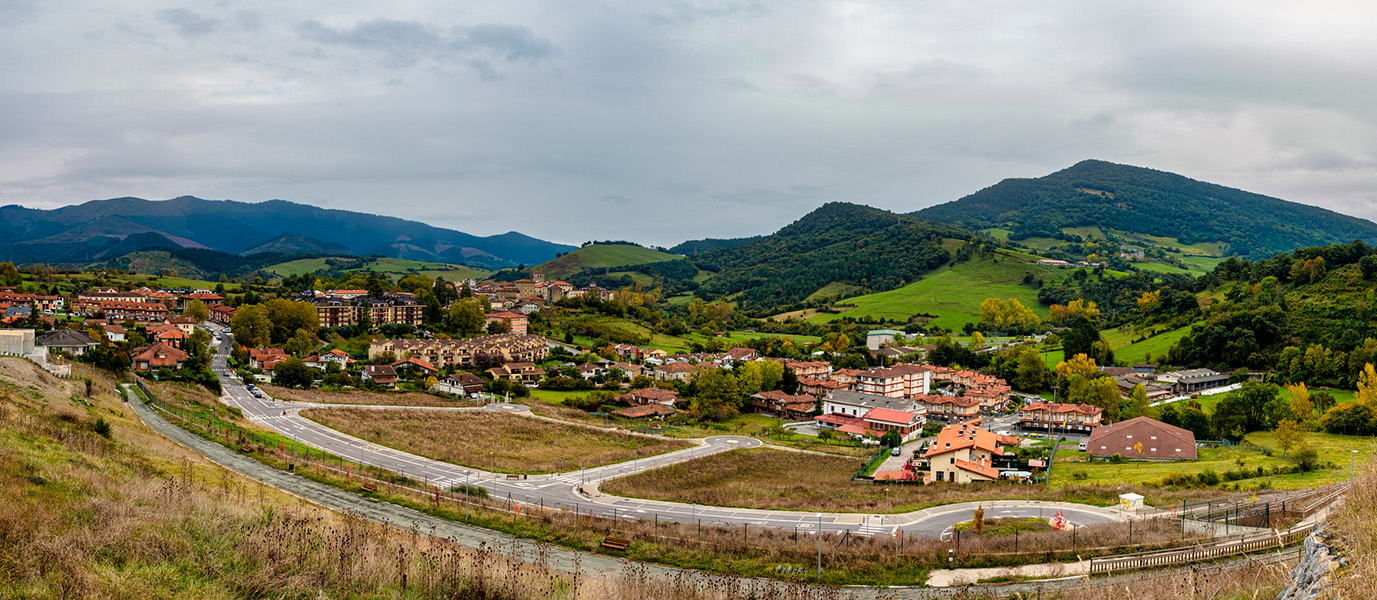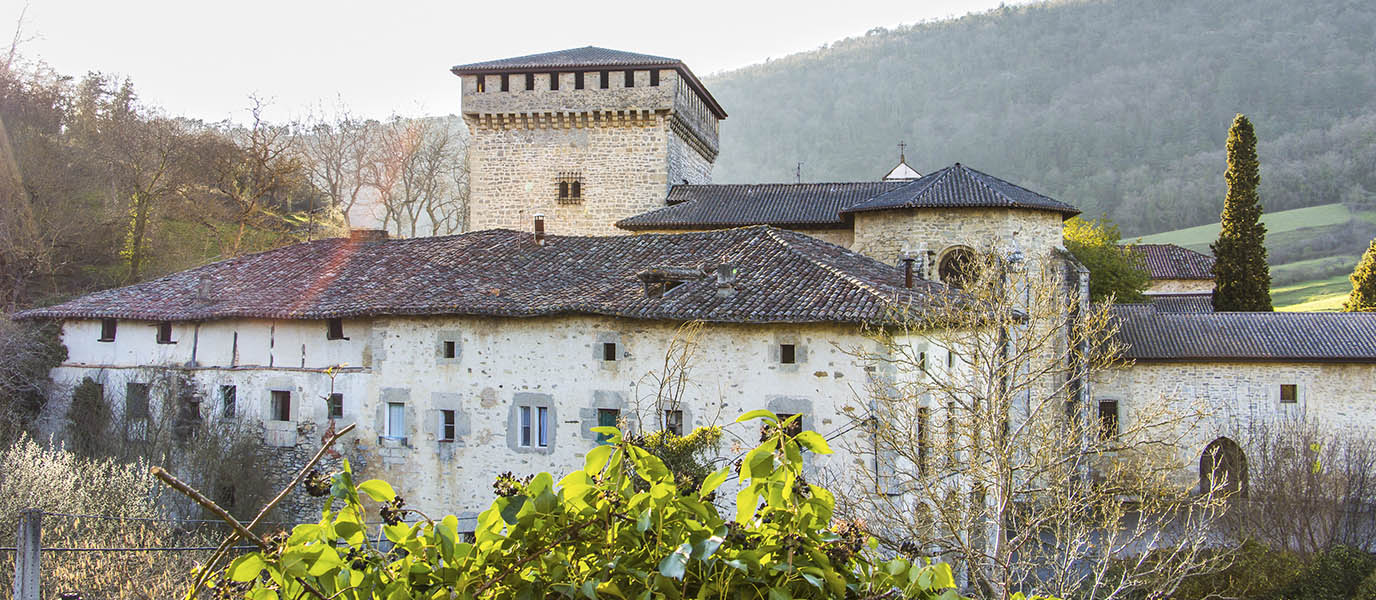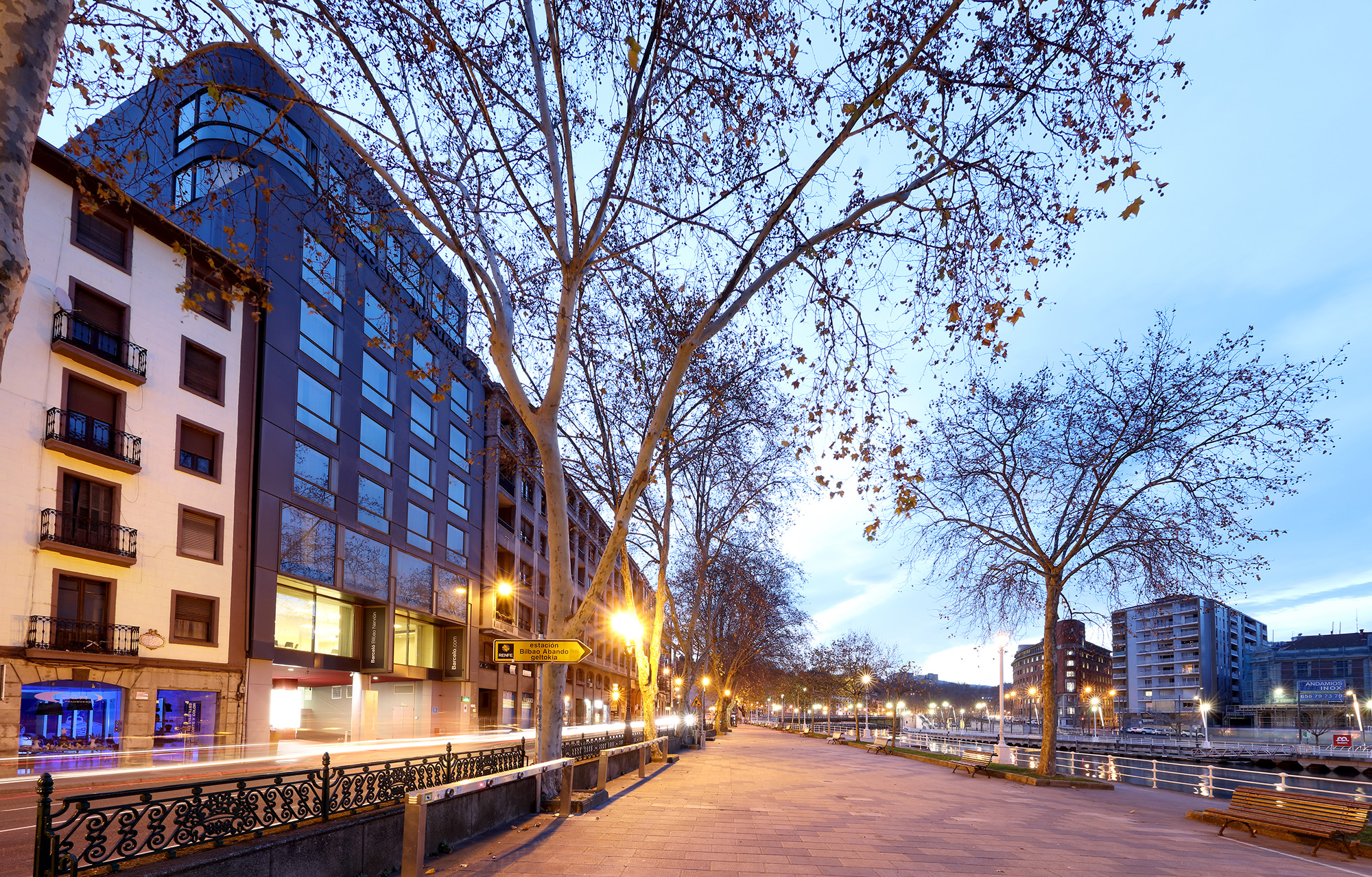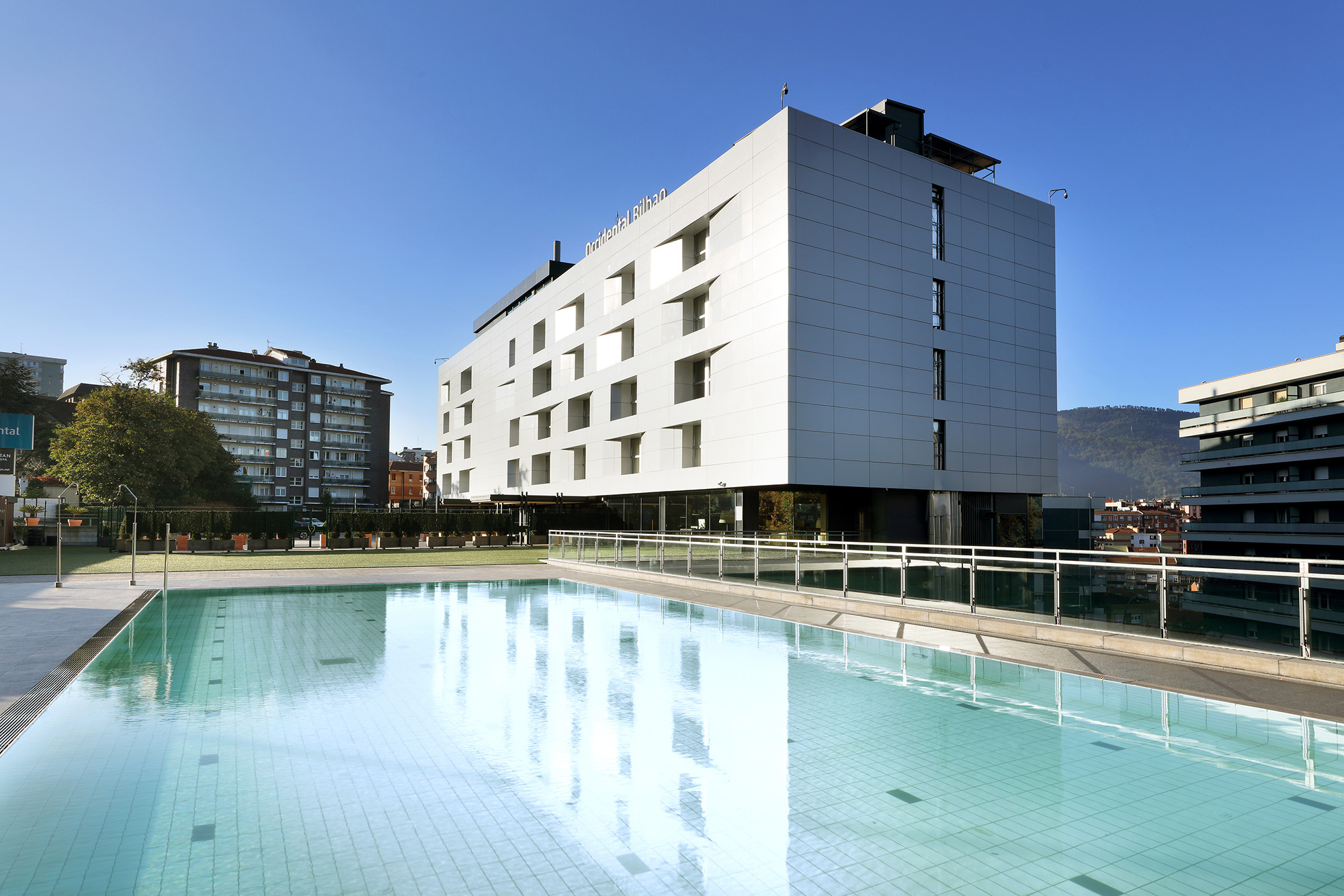Artziniega, a picturesque municipality nestled in the Ayala Valley in Álava, is another hidden treasure in the Basque Country where time seems to have stood still. With its well-preserved old town of cobbled streets, stately homes and medieval buildings, Artziniega offers visitors a journey back in time through its towers, palaces and convents that tell the story of its past. Founded as a town in the 13th century by Alfonso X the Wise, this little historic gem combines the charm of the Middle Ages with a lively cultural and gastronomic scene. Every corner here tells a story—from the stones of the Ortiz de Molinillo and Velasco Tower to the walls of the Convent of the Augustinian Nuns—reflecting a legacy that ties into the history of Bizkaia and Castile. A place where museums and architecture coexist with the green landscapes of the Álava mountains, making it perfect for exploring on foot.
-
- History of the area: Artziniega, where the Middle Ages meet modernity
- What to see on your visit: a tour of monumental Artziniega
- Ortiz de Molinillo Tower: the stronghold of local nobility
- Bengoa Tower, the oldest building in Artziniega
- Convent of the Augustinian Nuns, the former Monteano-Salazar Palace
- Museums: a reflection of the past and popular culture
- Sanctuary of La Encina, a place of pilgrimage beside a 500-year-old tree
- Where to eat: savour Artziniega, where tradition is served at the table
- What to see in and around Artziniega: nature and culture on Artziniega’s doorstep
History of the area: Artziniega, where the Middle Ages meet modernity
The history of Artziniega is a fascinating chronicle of its development as a strategic and commercial enclave since the Middle Ages. Its establishment as a town in 1272 by Alfonso X the Wise was no accident; Artziniega’s location on the border between the kingdoms of Castile and Navarre, and its proximity to the Lordship of Bizkaia, made it a key point for territorial and commercial control. This allowed Artziniega to establish itself as a centre of trade and a necessary stop on the routes connecting the Castilian plateau with the Bay of Bizkaia, fostering its growth and the construction of defences and prominent buildings.
In the late 15th and early 16th centuries, the town experienced an economic boom, demonstrated by the construction of imposing tower houses, such as the Ortiz de Molinillo and Velasco Tower and palaces like the Aranguren Palace, which symbolise the power and prosperity of the local noble families. These buildings not only showcase the influence of the noble families who dominated the region but also their role in the factional struggles that shaped the politics and development of the Basque Country during those centuries. The layout of Artziniega itself, with its network of medieval streets, follows the pattern of towns founded by the crown, with the main square, church and town hall as key landmarks.
In terms of religion, the Convent of the Augustinian Nuns, founded in the 16th century, is another of the town’s historical icons. This convent, with its impressive Gothic-Renaissance church, became a spiritual and cultural centre for the town. For centuries, the Augustinian nuns not only devoted their lives to contemplation and prayer but also influenced the education and social life of Artziniega, leaving a legacy that endures to this day.
The town’s growth was shaped not only by its architecture but also by its involvement in various political developments in the Basque Country. During the 19th and 20th centuries, Artziniega, like many towns in Álava, felt the impact of the Carlist wars and the political changes that influenced Spain’s history. Yet Artziniega has managed to preserve its essence, resisting the passage of time while modernising in its own way, striking a balance between progress and the preservation of its historical heritage.
What to see on your visit: a tour of monumental Artziniega
Artziniega offers visitors a journey into the past through its monuments and historic buildings, where every corner tells a story. This rich heritage led to its old town being declared a Historic-Artistic Monumental Site by the Basque Government in 1995.
Ortiz de Molinillo Tower: the stronghold of local nobility
One of Artziniega’s treasures is the Ortiz de Molinillo Tower, built in 1593 on the remains of an earlier medieval tower owned by the Counts of Ayala. This tower, which combines defensive features with the elegance of a noble residence, served as a stronghold for the local nobility and is as a symbol of the town’s power and defences. Today, the tower retains much of its original structure, allowing us to see what the defensive strategies of the time were like, with its thick stone walls and narrow windows. The tower is an excellent example of the military architecture used to protect the town from potential invasions and conflicts between lineages. After its restoration in 1994, it was transformed into a hotel and restaurant.
Bengoa Tower, the oldest building in Artziniega
Bengoa Tower is one of the finest examples of medieval architecture in Artziniega. Dating from the early 16th century, this fortress is its oldest preserved building. Situated in the old town, it stands out for its solid stone structure and defensive features typical of the time, such as arrow slits and thick walls that shielded its inhabitants from potential attacks. Its imposing appearance reveals its former significance as the residence of the Bengoa family, one of the most influential in the Ayala Valley. The family’s coat of arms can still be seen on the façade, reflecting their vital role in both the defence and administration of the area.
The tower has undergone several restorations to preserve its historical essence, maintaining its rugged, medieval nature. Inside, visitors can find original architectural features like wooden beams and a layout that reflects the lifestyle of the nobility of the time. Although Bengoa Tower isn’t permanently open to the public, its imposing presence serves as a lasting testament to Artziniega’s feudal past, attracting visitors interested in Basque history and architecture.
Convent of the Augustinian Nuns, the former Monteano-Salazar Palace
The Convent of the Augustinian Nuns in Artziniega, also known as the Monteano-Salazar Palace, is one of the town’s most iconic architectural masterpieces. Founded in 1586, the convent was built on what was once the stately palace of Pedro Ruiz de Monteano and his wife Inés de Oribe, transformed into a residence for the Augustinian nuns in 1606. The convent has three buildings: the old donor’s house tower overlooking the Plaza de Arriba (where the 19th-century Old Town Hall is also located), the chapel, which features the founders’ coats of arms on either side of the 16th-century entrance, as well as an additional residential building as the convent.
Museums: a reflection of the past and popular culture
Artziniega has two museums that are vital to help those who come here understand the history and culture of the area. The Ethnographic Museum provides an insight into the customs and daily life of the region through various rooms featuring recreations of craft workshops, old kitchens and traditional costumes. Meanwhile, the Santxotena Museum, an open-air space in a natural setting, showcases the sculptures of Xabier Santxotena and explores Basque mythology and its connection to the land. Both museums offer a unique experience that bridges the past and present, giving visitors a more profound understanding of Artziniega’s essence.
Sanctuary of La Encina, a place of pilgrimage beside a 500-year-old tree
Located on the outskirts of Artziniega, on a hill, the Sanctuary of La Encina is a place of deep devotion and natural beauty. Beside the majestic Tree of the Holm Oak, which has stood for over 500 years, the Sanctuary of Our Lady of the Holm Oak was completed in 1498, blending Gothic and Renaissance styles. This sanctuary is home to several important works, such as the Gothic-Flemish main altarpiece, notable for its artistic value, a 12th-century Romanesque carving of the Virgin, as well as the impressive 16th-century paintings of the Last Judgement that adorn the vaults and the chapel of Christ, dating from 1608.
In addition, the old stables of the sanctuary now house the Sacred Museum, which is home to a valuable collection of religious items, including the robes that adorned the Virgin of La Encina on her coronation day in 1954, among other highly important ecclesiastical treasures. Each year, the sanctuary attracts a great number of pilgrims and visitors, especially during local festivities, when processions and events are held in honour of the Virgin.
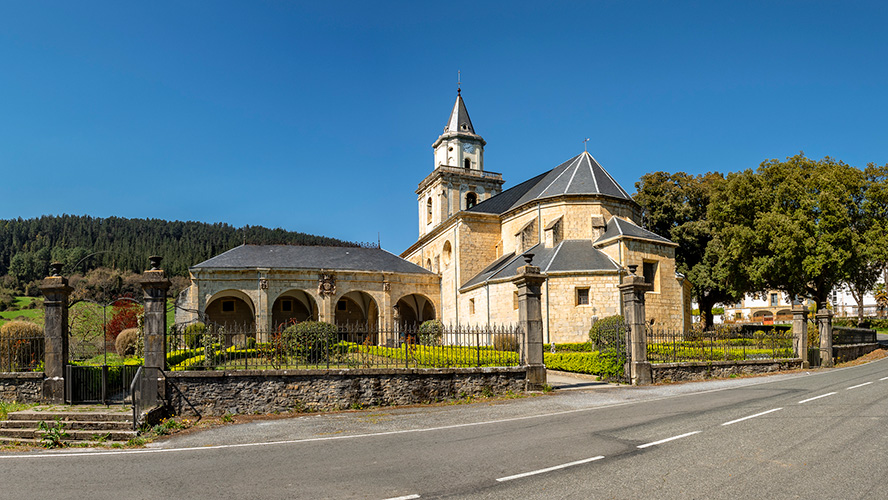
Where to eat: savour Artziniega, where tradition is served at the table
Artziniega’s culinary offerings reflect its rich cultural heritage. This small town boasts several restaurants and bars where you can sample traditional Basque dishes, such as Bizkaia-style cod, Gernika beans or chargrilled meats. The restaurant La Encina is one of the most iconic places to dine, a dependable spot to enjoy generous portions of local cuisine. From grilled chops to classic Basque pintxos, the culinary experience is an essential part of the visit.
Another must visit is Batzoki Artziniega, a cosy restaurant offering a wide selection of traditional dishes. Here you can enjoy a Basque-style meal with a fine Rioja Alavesa wine or local txakoli, immersing yourself in the atmosphere of this charming village.
What to see in and around Artziniega: nature and culture on Artziniega’s doorstep
Artziniega’s surroundings offer a wealth of natural beauty that’s certainly worth exploring. Just a few kilometres away lies the Gorbea Nature Reserve, an ideal spot for hiking and nature lovers. With trails that pass through forests, meadows and peaks, the park is perfect for unwinding and embracing the great outdoors. You can also visit the Salto del Nervión, the highest waterfall on the Iberian Peninsula, which provides a breathtaking natural spectacle, especially in the winter and spring months.

Just 11 kilometres from Artziniega is the Quejana Monumental Site, once the residence of Pedro López de Ayala, one of Álava’s most notable figures from the Middle Ages. This Basque poet and diplomat lived in a residence built by his father, Fernán Pérez de Ayala, in the 14th century. The complex of buildings, which includes a convent, a palace, a church and a tower, was declared a Cultural Asset in 2002 due to its significant historical and architectural value.
Just a few minutes’ drive away, you can also visit Mendieta Tower, an old watchtower that offers a spectacular view of the Ayala Valley. This spot is ideal for those who wish to connect with the medieval history of the region while enjoying the views and tranquillity the area has to offer.

























































